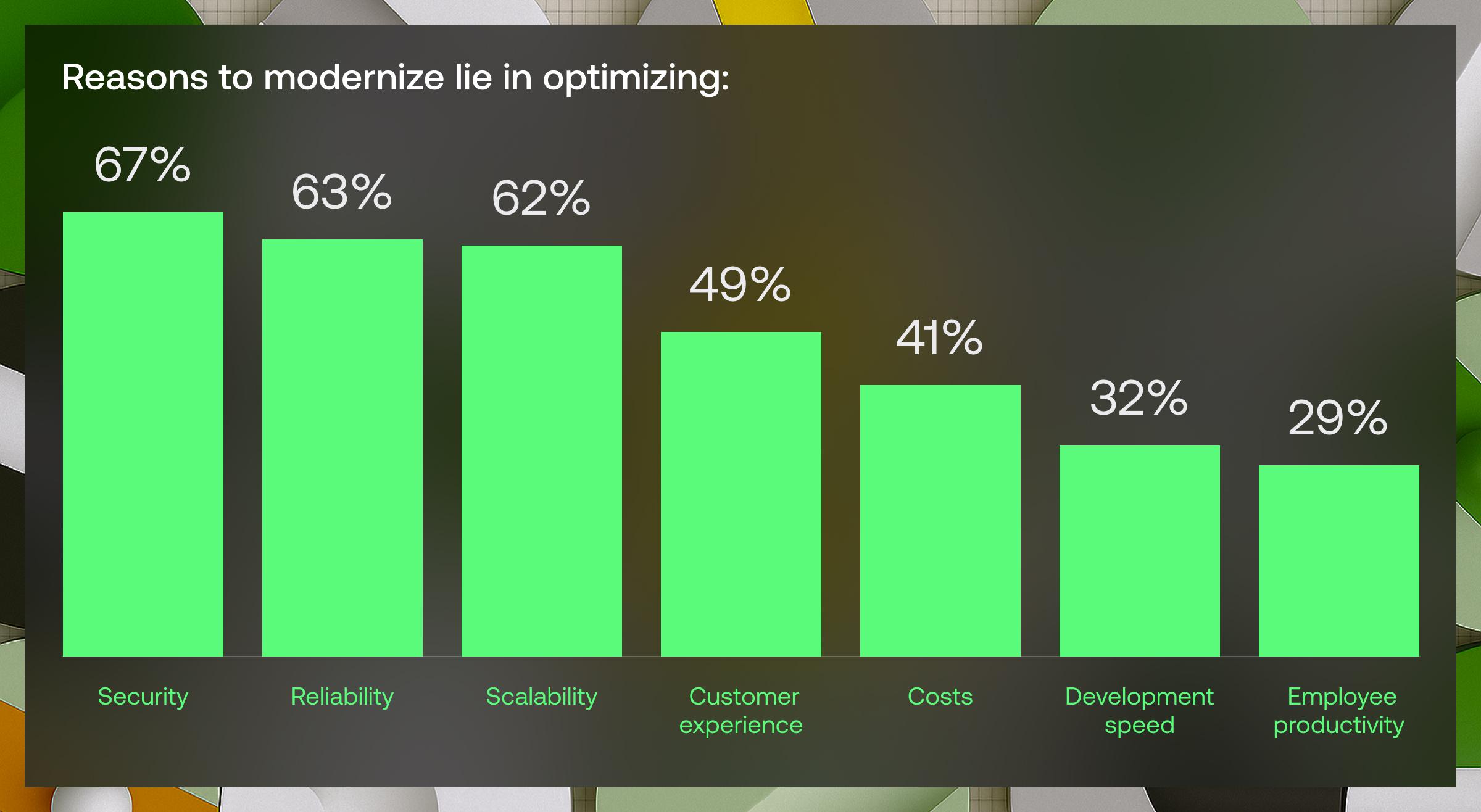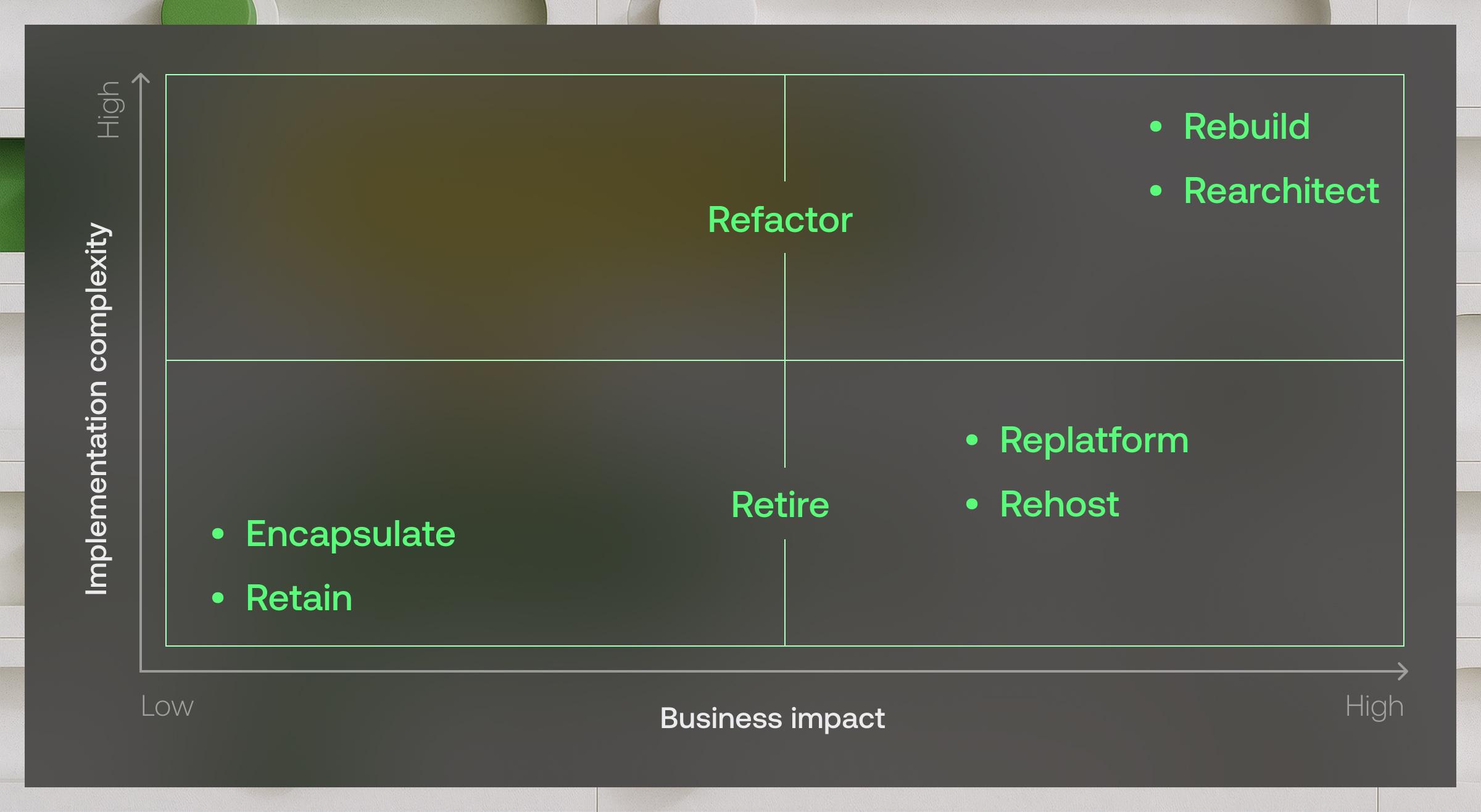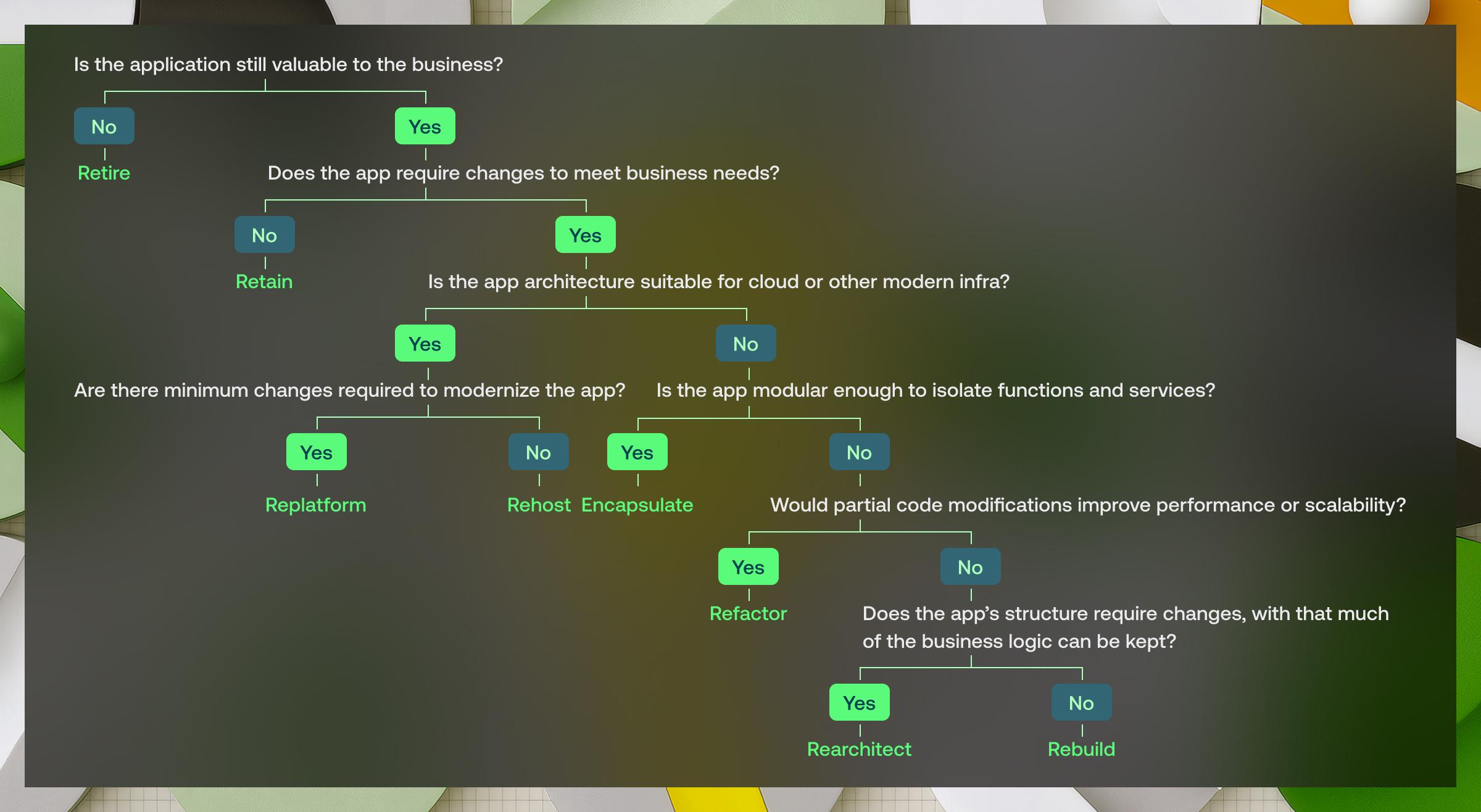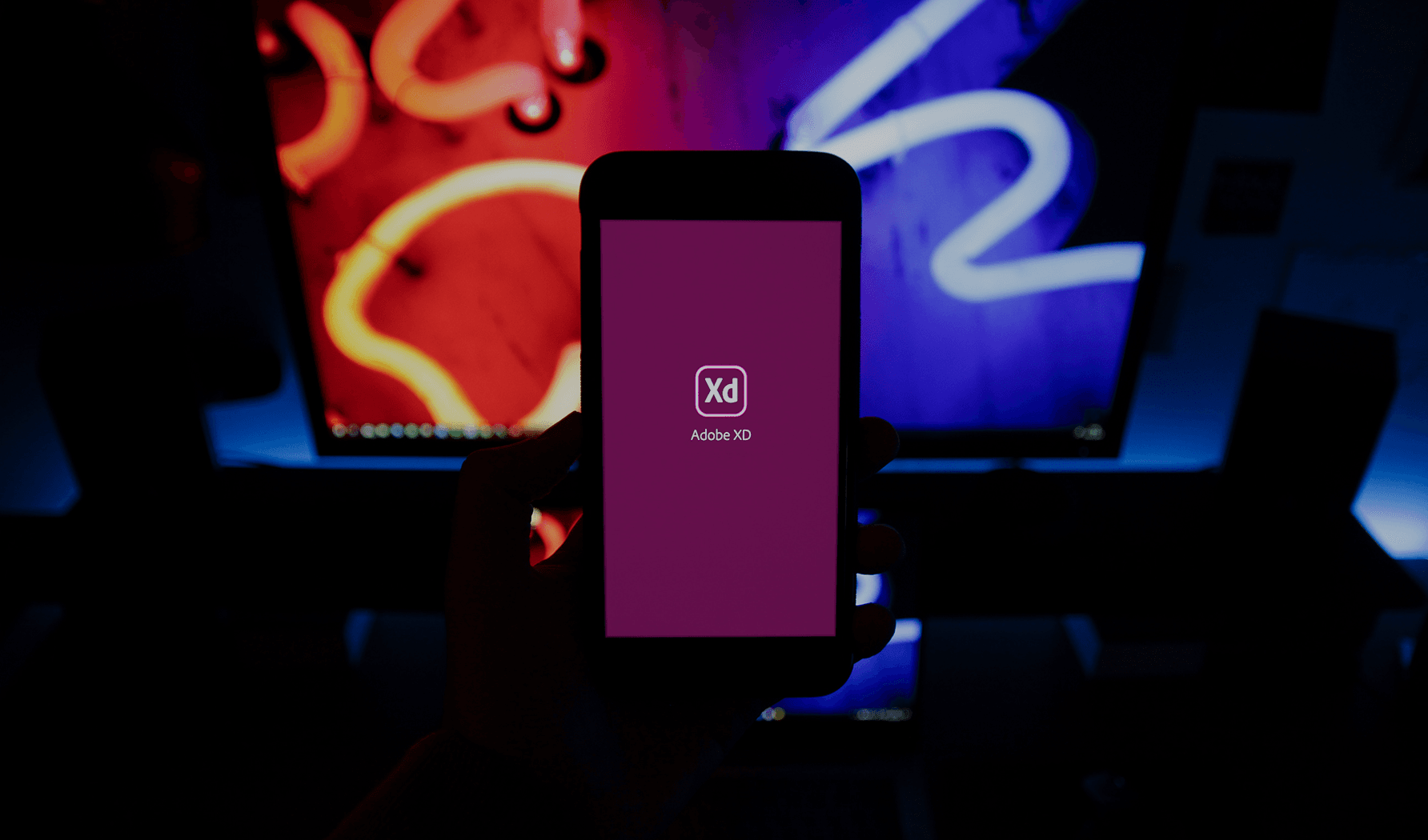
Bring your application up to speed with the right modernization strategy


Legacy systems can quietly hold your business back with growing technical debt, slow performance, and resistance to change. But modernization doesn’t have to mean starting from scratch.
At Vention, we’ve distilled two decades of hands-on experience in app modernization into one comprehensive blog post, packed with strategies, best practices, behind-the-scenes insights, and data* to help you rebuild smarter and scale stronger.
Why modernization is a business priority
Imagine this: Your app was built once and stays fast, secure, scalable, and loved by users. All with zero updates or effort on your side. Sounds great, right?
We like the sound of it, too. But in today’s digital world, that scenario simply doesn’t exist. And no app is an exception.
Ninety-five percent of companies find application modernization essential for their organization’s success.
No matter how solid your app was at launch, technology moves on, user expectations shift, and business needs evolve. Sooner or later, your app will need attention.
If your software is backed by continuous support and proactive evolution, you’ll likely address these changes gradually, with minimal disruption. But if your app is running on a set-it-and-forget-it mode, one day you may face some unpleasant surprises:
- Performance drop: The app has slowed down noticeably. What once felt smooth now frustrates users and impacts engagement.
- Competitive lag: Your competitors actively enhance their products with new features or integrations that users value, while you’ve found that they’re difficult or impossible to implement.
- Rising operational costs: Your operational costs drain the budget, and the app seems to be the culprit.
- Security vulnerabilities: You’re unsure about your app’s defenses, and every breach in the headlines adds more doubt.
- Lack of scalability: The business is growing, but the software is hitting its limits.
These challenges explain why so many companies prioritize modernization.

So, it’s evident that app modernization is not just about technicalities. It’s a strategic move that helps your business thrive in today’s competitive markets.
“Outdated software isn’t just about age. Don’t fall for that trap.
It’s easy to assume that outdated software means something built five, ten, or even twenty years ago. But in reality, the picture is more nuanced. While newer apps often carry less technical debt, age alone doesn’t determine whether software is truly outdated.
It’s relevance that determines software health. New frameworks, tools, and best practices emerge constantly. Cloud providers roll out updates weekly. Cybersecurity threats evolve daily. User expectations shift just as fast. Even a recently launched app can start falling behind if it’s not actively maintained and updated.”
Technological red flags that signal it’s time to modernize
Business-related red flags are only one side of the modernization equation. On the tech side, there are also warning signs that signal your application may be outdated or nearing a breaking point.
If any of these sound familiar, it’s time to take a closer look:
- Outdated frameworks and tools with discontinued support: Most likely, your app has already missed a couple of critical security patches, and it gradually becomes hard to maintain. Over time, you can face the challenge of hunting for qualified developers who are willing or able to work with outdated tech.
- Monolithic app architecture for a business aimed at active growth: Whether you’re aiming for scalability or faster feature delivery, a rigid monolith can slow everything down. It wasn’t built for the pace today’s market demands.
- Security vulnerabilities or non-compliance issues: If your app lacks robust security controls, such as authentication, data encryption, or role-based access control, it’s both exposed to potential threats and at risk of violating industry regulations. Closing these gaps is essential for protecting both your data and your reputation.
- Integration hurdles: If your app can’t easily connect to internal or third-party systems, or if your teams are still stuck exchanging data manually, unfortunately, you’re looking at a costly, time-consuming bottleneck that’s only going to grow.
How to modernize legacy applications: Key strategies
An application modernization strategy is a structured plan for transforming legacy software to meet current and future business and technology demands. The approach balances transformation impact and implementation complexity.
You may have heard of the seven R’s methodology, which unites Rehost, Reachitect, Refactor, Rebuild, Replatform, Retain, and Retire application modernization strategies. To that list, Gartner adds an eighth: Encapsulate, involving wrapping legacy components to expose their functionality via modern interfaces.
We break down each of these strategies below, helping you choose the one that best fits your goals, resources, and tech stack.

Encapsulate
When to use: Your app lacks the advantages of next-gen techs or may experience occasional performance bottlenecks. It’s not ideal, but functional.
Essence: The key move is to build an API layer around the application, allowing external systems to pull or push data without modifying the core.
Benefits: This application modernization strategy requires no significant investment.
Limitations: Underneath the new API wrapper, nothing about the app truly improves. The same architecture, inefficiencies, and potential security gaps remain. Over time, maintaining the encapsulated system may become harder as dependencies and expectations continue to evolve.
Rehost (aka lift-and-shift)
When to use: You’re dissatisfied with the app’s speed, maintenance costs, or scalability. However, you’re not planning to change anything within the app (at least, not now). Instead, you decide to reconsider where the app runs.
This approach is often the first stage of a more complex app modernization strategy, which is usually followed by refactoring.
Essence: An app is moved from on-premises to the cloud, but its code and architecture remain unchanged.
Benefits: Quick and low-risk. You benefit from cloud infrastructure (like improved reliability, scalability, and managed services) without modifying the app.
Limitations: While the approach solves infrastructure issues, any app-related problem is still there. If the app was clunky before the migration, contained security loopholes, or had technical debt, you’ll still find all those issues, just in a more efficient environment.
Refactor
When to use: The app’s architecture and features are solid, but the code is messy, inefficient, or hard to maintain.
Essence: The modernization effort is focused on cleaning and optimizing the code. The to-do list can include removing duplicates, reconsidering dependencies, and rewriting some code fragments.
Benefits: You improve the app’s code to bring efficiency, speed up updates, and facilitate maintenance. What’s more, you can get better compatibility with cloud services and robust CI/CD pipelines.
Limitations: This application modernization strategy is limited to the codebase; architectural and functional changes are out of scope.
Rearchitect
When to use: The architecture is limiting your scalability, speed, or flexibility.
Essence: Usually, it’s about reshaping the architecture into smaller, more manageable parts or adopting event-driven or cloud-native designs.
Benefits: A more modular system gives you improved scalability, flexibility, and resilience.
Limitations: This approach takes time. It can also require a short transitional period during which things can become less stable until the new architecture is fully tested and optimized.
Rebuild
When to use: The app no longer meets your needs. Little, if anything, is worth saving from the existing code or architecture.
Essence: While you can choose to keep some business logic or valuable features, you’ll have to build the app from scratch. Its code, design, and tech stack would be created anew.
Benefits: You can eliminate the technical debt and focus entirely on designing and developing the app that matches your current and future business goals.
Limitations: This app modernization strategy will require double effort, as you’ll have to develop a new app and maintain the old one, both projects running in parallel.
Replatform (aka lift, tinker, and shift)
When to use: You’re planning to move the app from one environment to another (usually from on-premises to the cloud) and introduce minor adaptations to take advantage of the new platform.
Essence: The main idea is to shift the app to a new infrastructure (similar to Rehosting) but with small code or architecture tweaks that fall short of full Refactoring or Rearchitecting.
Benefits: This application modernization strategy presents an excellent ratio of effort vs. added value.
Limitations: As the approach doesn’t solve deeply rooted problems, it may require more substantial modernization effort and alterations over time.
Retain (aka revisit)
When to use: You know the app is outdated but choose to leave it as is, for now. Maybe other initiatives take priority, or the risks and costs of modernization feel too high.
Essence: No modifications, no workarounds. The app stays exactly like it is, with all of its existing limitations. This strategy may be viable by itself: let the app work until it raises major issues. Alternatively, it can be part of a long-term strategy with app replacement as a final step.
Benefits: You can use an outdated (but stable) application and focus your effort on where it’s needed most.
Limitations: Technical debt accumulates. Over time, you may face mounting security, maintenance, and compatibility challenges.
Retire
When to use: Your app’s functionality has already been replaced with other systems. Keeping it active means more costs and risks than value.
Essence: The app is shut down. Data is archived or migrated, and the system is decommissioned.
Benefits: App decommissioning frees your resources for strategic initiatives.
Limitations: Decommissioning must be carefully planned. Overlooking dependencies or data links could result in disruptions, gaps, or loss of critical information.
Legacy application modernization strategies at a glance
|
|
Effort |
Deployment time |
Business impact |
Risk level |
|
|
The complexity of the actions to be done |
The time it typically takes to implement and go live |
Tangible and intangible value the change drives |
The likelihood of issues or disruptions during or after modernization |
|
Encapsulate |
Low |
Fast |
Moderate: Mainly thanks to integration gains |
Low |
|
Rehost |
Low |
Fast |
Moderate: Gains from infrastructure efficiency (e.g., cost savings, improved availability), but no app-level change |
Low |
|
Refactor |
Moderate–high |
Moderate |
Moderate–high: Easier code maintainability, faster app performance, better user experience |
Medium |
|
Replatform |
Moderate |
Moderate |
Moderate: Gains from cloud-managed services, performance tuning |
Medium |
|
Rearchitect |
High |
Moderate |
High: Enhanced scalability, facilitated and faster feature deployment, boosted performance |
High |
|
Rebuild |
Very high |
Slow |
Very high: Better alignment with today’s — and hopefully, future —business needs
|
Very high |
|
Retain
|
None |
N/A |
None |
Low |
|
Retire |
Low |
Fast–moderate |
Moderate: Frees up resources and eliminates technical and financial debt from unused or redundant systems |
Low–moderate |
Ready to modernize legacy apps without the guesswork?
We’ll help you choose the legacy app modernization approach that delivers maximum impact with minimal disruption.
Approach to legacy application modernization
While the exact steps may vary by project, we offer a clear, high-level overview to help you understand the core stages of a successful modernization journey:
Assess the current state
An annual review of your systems is a good baseline, especially if they are business-critical or handle customer, patient, or financial data. During the audit, you’ll closely examine the underlying infrastructure, tech stack, codebase, dependencies, and business fit. Depending on complexity and scope, the assessment may take anywhere from two to eight (or more) weeks.
But don’t rely only on the calendar to tell you it’s time. If your business has undergone significant changes, like a merger and acquisition or a product shift, it’s best to conduct an out-of-cycle audit. Also, consider this measure if you see warning signs such as recurring bugs, slow performance, or rising operational costs.
Align tech aspects with business goals
Map your business goals with technological constraints. For example, you’re planning to enter new markets, but the current on-premises infrastructure has already reached its limits and impedes geographical expansion. You want to enhance digital customer experience, but the rigid monolithic architecture makes it hard to implement new features.
Not everything can be modernized at once, so set your priorities. Applications with the highest business impact (and the most severe technical debt) should come first.
Strengthen the business–tech connection by linking modernization goals to measurable KPIs. Page load improvements, for example, can directly influence conversion rates. Automated deployments can lead to faster product releases. Success isn’t just about cleaner code; it’s about better business outcomes.
Choose the best-fitting modernization strategy
Depending on your business objectives and expectations as well as pain points you’ve identified in your infrastructure and software, you’ll need to choose the modernization strategy for each of the apps.
As described above, the choice is between Retain, Retire, Rehost, Replatform, Refactor, Rebuild, Rearchitect, and Encapsulate. Feeling overwhelmed by the mere number of options? Here’s a simplified, but straightforward decision tree:

Draft the modernization plan
Create an application modernization roadmap to ensure the process runs smoothly and efficiently. A strong starting point is to break the effort into logical steps, then prioritize them based on impact and complexity, identify which components are low- and high-risk, define realistic timelines, and assign the required resources accordingly.
Where possible, look for opportunities to run processes in parallel, like containerizing stateless services while separately preparing database migration scripts. This can accelerate delivery without sacrificing control.
“Don’t overlook your data landscape.
In many cases, modernization isn’t just about the system itself, but also how it handles and protects the data it holds. This is particularly crucial in industries with strict compliance requirements, like finance or healthcare.
Modernization strategies should account for data flows, access controls, encryption standards, and regulatory alignment. If you’re dealing with a rehost or replatform strategy, you can implement rollback mechanisms to revert the system to a known-good state in case something goes wrong. For strategies like rebuild or rearchitect, you might focus on A/B testing to validate new implementations safely.”
Now do it: Modernize
The actions you take at this stage depend entirely on the chosen modernization strategy. Planning a move to the cloud? It’s time to choose the best-fitting provider: AWS, Microsoft Azure, Google Cloud Platform, or a hybrid solution. Once selected, set up and configure the core infrastructure and managed services your app will depend on, such as networking, databases, storage, and identity management.
For rearchitecting or refactoring, modernization will be more complex: it could require deconstructing a monolith into microservices, introducing new frameworks or platforms, and rewriting significant portions of code.
Wherever possible, structure the modernization process to minimize business disruption. This could mean:
- Phased rollouts of changes by function or region
- Scheduling downtime or migrations during off-peak hours or low-traffic windows
- Keeping critical systems running in parallel until complete cutover is safe.
Need efficient and safe development and deployment? Consider adopting DevOps or even DevSecOps practices, with CI/CD pipelines and IaC as foundational principles.
Also, don’t overlook observability. Set up logging, monitoring, and alerting early to validate changes during rollout and maintain performance post-deployment.
Finally, plan for robust security controls. These should include role-based access control, encryption at rest and in transit, and credential management.
Support
Once modernization (or its specific phase) is complete, monitor the system closely. Monitor application health, infrastructure performance, and user behavior to catch issues early and respond quickly. This not only helps maintain performance but also provides valuable insights for continuous improvement.
Who should be involved in app modernization?
Business stakeholders: Their input is essential for aligning modernization efforts with broader business goals. They help prioritize which applications to modernize first and ensure the outcomes support strategic objectives.
Tech experts: This includes developers, solution architects, QA engineers, security specialists, and DevOps or DevSecOps professionals. Whether part of your in-house team or brought in externally, these experts assess existing systems, plan the technical approach, and execute the modernization.
In fact, external partners play a key role in 66 percent of modernization journeys, either leading in-house teams or directly modernizing applications. Their expertise can significantly accelerate delivery and reduce risk, especially for complex or large-scale initiatives.
Modernization timelines
Unsurprisingly, the timeline for modernizing an application depends heavily on the current state of the legacy system and the complexity of the required transformation. Factors like architectural rigidity, technical debt, and integration depth all influence the time and effort involved.
Yet despite these variables, industry-wide data reveals a useful benchmark: in more than half of all cases, modernizing a single application is a year-long initiative or shorter.
Here’s a snapshot of how modernization timelines typically unfold:
- 23% of organizations aim to modernize apps within 6 months
- 28% of organizations complete modernization in 6 months to under a year
- 28% of organizations plan 1 to under 2 years
- 21% of organizations anticipate 2 years or longer
In a world where a large enterprise manages an average of 367 apps (SaaS contributes to that number, but custom software still makes up a significant share), these timelines clearly show that modernization is a continuous journey, not a one-off project.
With so many apps in the mix (each with different levels of tech debt, value, and importance) you can’t treat them all the same. And since even quick modernization projects can take months, it’s essential to set clear priorities so your time, budget, and team effort go where they matter most.
What’s next in modernization?
A growing disparity between digital leaders and slower adopters
So far, only 18 percent of organizations have reached the stage of continuous modernization. A significant 58 percent have already completed small- or large-scale modernization projects. That leaves just 24 percent of companies at the very beginning of their modernization journey.
This trend reflects a growing recognition that modernization is no longer optional. As more businesses move beyond isolated projects toward sustained modernization efforts, the gap between frontrunners and late movers will likely widen.
Artificial intelligence
Wherever there’s talk of automation and efficiency in software development, AI is in the conversation. Whether it’s copilots assisting with code or AI-driven testing, the impact is real and lasting.
Fifty-three percent of companies say they use AI to aid application modernization processes, and 42 percent add AI to legacy applications to modernize them. Only 22 percent of the respondents reported that their organization is not using AI to support modernization.
Sustainability
Cloud computing has long been associated with improved efficiency. Today, it's equally tied to sustainability. Moving from on-premises infrastructure to the cloud also means reducing environmental impact.
Leading providers like AWS, Microsoft, and Google are investing heavily in renewable energy and have committed to water-positive initiatives (returning more water than they consume to cool their giant data centers).
Cloud-native design
While migrating to the cloud offers meaningful gains, adopting a cloud-native design brings greater value. With cloud-native architectures, you can:
- Leverage serverless computing to run code only when triggered.
- Enable auto-scaling and load balancing to respond instantly to changes in demand.
- Deploy microservices independently, allowing faster updates and reducing the failure blast radius.
- Use containerization to improve portability, reliability, and CI/CD integration.

Risks and how to mitigate them
Modernizing legacy systems comes with an inherent risk. Things can go wrong on many fronts: technical, operational, financial, and organizational. It’s important to be aware of possible risks and draft mitigation strategies well in advance.
System breakdown
Legacy code can be tightly coupled and poorly documented, making it vulnerable during transitions. Critical components may break, leading to system outages or even data loss.
For modernization projects, you need to devise a thorough backup plan and rollback mechanisms to be able to return everything one step back, where everything functions smoothly.
Equally important is the use of a staging environment: It’s identical to the production environment, still it’s designed for testing. Running planned changes in staging first enables your team to simulate the impact of updates, validate dependencies, and catch bugs or performance bottlenecks.
Security vulnerabilities
Planning to move your existing code to modern infrastructure? Start by reviewing the codebase for security gaps. Simply shifting an application to the cloud doesn't make it secure by default. While cloud providers offer strong built-in security features, those won’t protect your app if vulnerabilities already exist.
Vulnerability assessment and penetration testing can be a good baseline. For more advanced and ongoing protection, consider adopting a DevSecOps approach, which integrates security directly into your development lifecycle.
Project overruns
Budget overruns and missed deadlines are common project risks but modernization efforts are especially prone due to undocumented legacy code and hidden dependencies. These often lead to underestimated timelines and scope creep.
Invest your time in code and dependency analysis. The more you know about the as-is state, the fewer unpleasant surprises in the form of scope creep, delays, and extra work and money you’ll encounter.
Resistance to change
Resistance to change may take multiple forms, from end users reluctant to adopt new workflows to stakeholders lacking enthusiasm and involvement.
A well-established change management process saves the day. The more clearly you understand your current system, the more accurately you can plan, and the fewer costly surprises you’ll face down the line.
The ROI of application modernization
Calculating the return on investment (ROI) for a modernization project follows the same principle as any other initiative: comparing what you put in with what you get out.
Here’s a breakdown of the typical investments and potential gains.
Investments
- Work hours of developers, testers, security engineers or the fee for involved external experts
- Cost of software (migration tools, third-party APIs, AI tools, etc.)
- Cloud fees (infrastructure and cloud-native services)
- Training costs (onboarding and upskilling)
- Double operational costs (if you choose to run the new and the old systems in parallel)
- Potential downtime and business disruption.
Gains
- Revenue boost
- Improved time-to-market thanks to faster and bug-free deployments
- Better user experience and retention rate
- Increased market share due to new features, improved performance, etc.
- Enhanced security
- Quicker app response time and performance.
You might be wondering: How do you assign monetary value to intangible gains? While it’s not always straightforward, it's achievable.
For example, you can measure improved UX via increased retention rate and longer sessions. Maybe you are now witnessing a boost in conversions? Benchmark the figure against the pre-modernization era.
Then comes the key step: Assign monetary value to each improved metric. If your conversion rate rises by 2 percent and each converted user brings in $100 annually, that’s a direct gain you can calculate.
About Vention
Vention is a custom software development and application modernization company with over 20 years of experience and a global presence across 20+ offices. Committed to delivering engineering peace of mind, we combine deep technical expertise with industry best practices to help businesses of all sizes build efficient solutions.
Curious what modernization looks like in action?
Check out how our clients are winning with modern tech:

Our engineers turned StoneX’s flagship solution into a product capable of handling up to 20 million inquiries daily while maintaining exceptional speed and functional excellence.
When Juice Plus+ decided to transform their legacy solutions, we helped the company make a quantum leap toward microservices. As a result of the change, Juice Plus+ benefited from accelerated deployment and improved system performance.
Our team delivered new functionality, which helped Curve raise £9.4M in a record-breaking Crowdcube campaign. Also, we refactored parts of legacy systems and upgraded Curve’s backend system.
We modernized Integrate’s core services with a cloud-first approach, using AWS and Kubernetes to boost search speed. As a result, the company got a powerful platform that processes over 8 million lead records and scales customer pipelines by 600 percent, driving a 10x ROI.
Want your modernization project to become the next success story?
Connect with our team to explore the strategy that sets you up for long-term impact.
- Huge thanks to Red Hat’s State of Application Modernization Report, which surveyed 1,000 respondents and delivered valuable insights and stats across a wide range of modernization topics. All the stats referenced in this text are sourced directly from that report.





